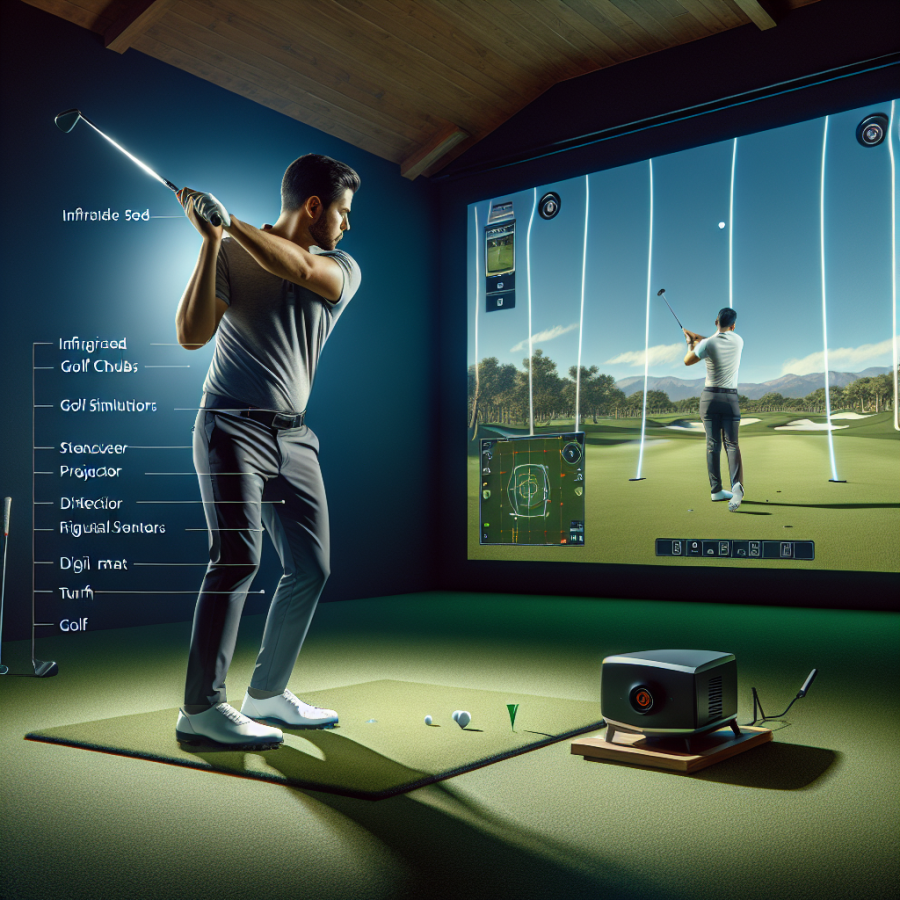Understanding the Technology Behind Golf Simulators
As the use of technology in sports becomes more common, golf simulators have grown in popularity for their ability to provide accurate and precise gameplay. Understanding how these simulators work is essential for distinguishing between different types and assessing their quality. Golf simulators utilize a combination of components including high-speed cameras, infrared sensors, radar, impact screens and advanced software algorithms to recreate an authentic golfing experience.
The initial setup of a golf simulator involves correctly placing your ball in the designated hitting area. When you swing your golf club and make contact with the ball, various technologies come into play to track your swing and the ball's trajectory.
High-Speed Cameras
High-speed cameras are one of the most crucial components of golf simulators. They capture your swing from different angles, capturing several thousand frames per second. These cameras measure the club's speed, angle, and direction at the point of impact, as well as the ball's initial direction, speed, and spin. The more cameras a golf simulator has, the more data it can capture, which often translates into increased precision.
Infrared Sensors
Some simulators also use infrared sensors to offer even greater accuracy. When a golf ball passes through these sensors, they measure the speed, angle, and spin of the ball. This information helps in calculating how far the ball would go, its trajectory, and where it would land in a real-world scenario.
Radar Technology
Some high-end golf simulators utilize radar technology to further enhance their accuracy. Radar measures the same data as cameras and infrared sensors but does so using radio waves. It detects the velocity, launch angle, and spin rate of a golf ball. This technology is usually employed in addition to high-speed cameras for a more comprehensive swing analysis.
Impact Screens
The impact screen is another vital part of a golf simulator. It is the surface onto which the ball is hit. It has to be made of a material durable enough to withstand the impact of the ball, yet responsive enough to display an accurate translation of the ball's flight. High-quality impact screens will display the trajectory of the ball in real-time accurately, adding to the overall realism of the golf simulation.
Software
All of this technology would be incomplete without advanced software algorithms to analyze the captured data and generate a realistic ball flight. This software must accurately translate all physical ball and club movements into a 3D virtual environment.
Read also:
Unleashing Potential: The Thrilling World of Freerunning
Evaluating the Accuracy of Different Golf Simulators
Golf simulators have dramatically changed the golfing landscape, offering players the opportunity to practice and play golf indoors regardless of weather or time restrictions. They provide a virtual golfing experience through high-tech software, cameras, and sensors to analyze the player's swing and project the ball's trajectory on a large screen.
As technology advances, the accuracy of these devices also improves significantly, thus provoking an unavoidable question – precisely how accurate are golf simulators nowadays? To answer this question, let's evaluate the accuracy of some of the most popular golf simulators on the market.
1. TrackMan Simulators
TrackMan is renowned in the industry for the accuracy of its simulators. The company uses dual radar technology—one radar system tracks everything the club does, while the other focuses on the ball. TrackMan records several parameters including club speed, attack angle, club path, face angle, ball speed, spin rate, carry distance, and total distance. The manufacturer claims an accuracy level of 98-99%, making it one of the most precise simulators on the market.
2. GCQuad by Foresight Sports
The Foresight GCQuad uses four high-speed, high-resolution cameras to capture the clubhead and the ball at the moment of impact. It captures 200 frames per second and can analyze clubhead speed, angle of attack, club path, and ball speed. It boasts an accuracy level close to TrackMan, making it a reliable choice for both amateur and professional players.
3. SkyTrak Golf Simulators
Using high-speed photometric technology, SkyTrak captures several parameters at the moment of impact, transmits the data into its system and then uses complex algorithms to predict the trajectory of the ball. While some feel it might not be as accurate as TrackMan or GCQuad, the consensus is that it provides compelling reliable data and represents excellent value for money.
4. OptiShot 2 Simulators
The least expensive simulator on this list, OptiShot 2, uses 16 high-speed infrared sensors to measure club path, clubface angle, swing speed, and distance. While it's true that its reading, especially around spin rates, are not as accurate as higher-end simulators, the OptiShot 2 offers an affordable option for the casual golfer.
In conclusion, the accuracy of golf simulators can vary significantly depending on the technology used and the price range.




